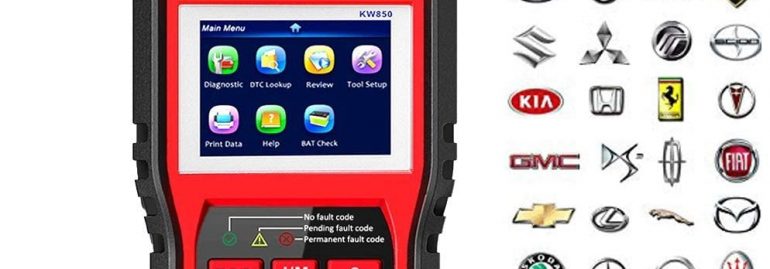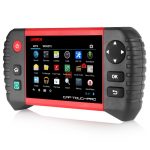If you’re not familiar with auto scan codes, this article will help you better understand them. This article will explain the different types of codes, as well as how to read them. In the meantime, you can learn more about the codes you may have seen on your car. Also, read on to discover how to interpret these codes to better diagnose your car’s problems. Here are some helpful tips:
Diagnostic trouble codes
Diagnostic trouble codes are a form of code used to indicate a car’s malfunctions. Typically, the codes are set to alert the driver that something is wrong with the car. When these codes are set, the car’s on-board computer management system stores them. Some trouble codes are pending and some are permanent, but either way, understanding the codes and what they mean will help you troubleshoot the problem.
A diagnostic trouble code is a series of five characters, each representing a different component of the car. The first two characters represent the parts of the engine and transmission, while the third character refers to the components of the chassis, the passenger compartment, and the user network. The third character may be a number from one to nine, or a letter. The codes are interpreted according to the severity of the issue. You should write down the code or save it for future reference.
The third type of code is an error that occurs when the EGR system is not working properly. The EGR system controls nitrogen oxide emissions and combustion temperatures. Some drivers experience poor fuel economy, rough idling, or even pre-ignition knocking. The EGR error code can be caused by multiple issues in the vehicle, including a clogged catalytic converter. An electrical problem inside the EGR circuit or problems with the engine computer are other common causes of this code.
While a DTC isn’t a serious fault, deleting it will leave a door open for future problems. A few nefarious ways to delete a DTC include deleting the code from the computer and having a technician look at it. Moreover, you may end up deleting a DTC that will cause your car to misbehave in the future. In addition to deleting the code, deleting the DTC may also cause the sensors to be reset or the module to lose communication.
There are several kinds of DTCs that are commonly associated with different types of vehicles. For example, the Evaporative Emission Control (EVAP) system is responsible for preventing gas fumes from entering the atmosphere, thus keeping air pollution to a minimum. The idling and speed controls of a vehicle are also monitored with the help of EVAP codes. The transmission computer is the most common cause of these codes. The use of an OBD scanner to read these codes is essential in diagnosing any on-board vehicle malfunction.
Basic code readers give a five-character code that you can check with the help of a standard DTC list or by visiting the manufacturer’s website. More robust solutions offer full-code definitions and fault alerts. These readers usually plug into a 16-pin OBD-II diagnostic connector, which is found in the left-hand side of the steering column. For pre-1996 vehicles, you need to buy specific adapters.
Types of codes
There are four types of auto scan codes: P0xxx, P1xxx, and P0x00. The P1xxx codes are manufacturer specific and cover areas other than emissions. The third character of these codes identifies the system in which the fault occurred. The numbers one and two are for fuel or air metering problems, while the P0400-P0499 codes are for auxiliary emissions controls and idle control system problems.
The powertrain (P0782) and chassis (C0782) codes pertain to the engine and transmission systems. The TCU, or transmission control unit, is the part of the car that handles communication. In other words, the TCU sends the codes when there is a problem in any of the system’s components. The first digit of each code indicates what system has malfunctioned. These codes are typically grouped into different subcategories.
EVAP (Exhaust Valve Altitude Pressure) codes are responsible for identifying a malfunction in the EVAP system, which keeps gas fumes out of the atmosphere. Transmission (TCE) codes monitor the transmission, which controls the speed of the vehicle. A malfunction in the transmission computer or speed sensor could trigger a TCE. To accurately diagnose an issue, it is important to use the proper diagnostic tools.
OBD2 (On-Body Diagnostics) codes contain four numbers. The first digit specifies what system is affected, the second indicates the specific fault designation, and the last two digits identify the exact code. A scan tool is used to read these codes and troubleshoot the problem with the car. So, it’s vital to know what these codes are and how to interpret them. So, let’s take a look at some of the most common codes and their meanings.
OBD-II codes are the same for all vehicles, except the type. In most cases, generic codes are used. That means the P0301 misfire code means the same thing for all vehicles. On the other hand, enhanced codes are added to the list to offer more information. These codes cover non-emission related failures and system failures not directly connected to the engine. The codes for this category include airbags, brake fluid, and axles.
In order to read these diagnostic codes, you’ll need to purchase a code reader for your vehicle. You can use one of several code readers and make sure you have the one that’s right for your vehicle. If you don’t know which one to buy, check out the DTC list of the vehicle’s manufacturer or the vehicle manufacturer’s website. Then, plug the code reader into the 16-pin OBD-II diagnostic connector, which is found under the dashboard. If your vehicle was built before 1996, you’ll need to purchase a special adapter for your car.
How to read them
If you’re wondering how to read auto scan codes, you’ve come to the right place. OBD scan tools can be bought in many different styles and types. Some have a menu for trouble codes, while others just list the codes in numerical order. Some of the tools even come with definitions for the codes. If you want to use a tool for more advanced diagnostics, you’ll want to learn how to use a tool that can read both OBD and generic codes.
OBD trouble codes are used to identify problems with a vehicle. These codes are five-character strings of numbers and letters. Each one represents a part of your vehicle, including the air conditioner, air bag, chassis, anti-lock brake system, powertrain, and user network. OBD scanners can read all these codes and help you figure out if there’s a problem with your vehicle. However, not all scanners can read all of these codes, so you’ll need to invest in a tool that can.
A code reader that only reads generic P0 and P1 codes will not be able to diagnose any type of problem with your car. Most of these readers will only read generic PO fault codes and not manufacturer-specific P1 codes. The scan tools available in North America will read codes from popular manufacturers like GM, Ford, and Chrysler. Most of them will only read the codes from North American vehicles, however, and they may not be capable of reading codes from European or Asian cars.






